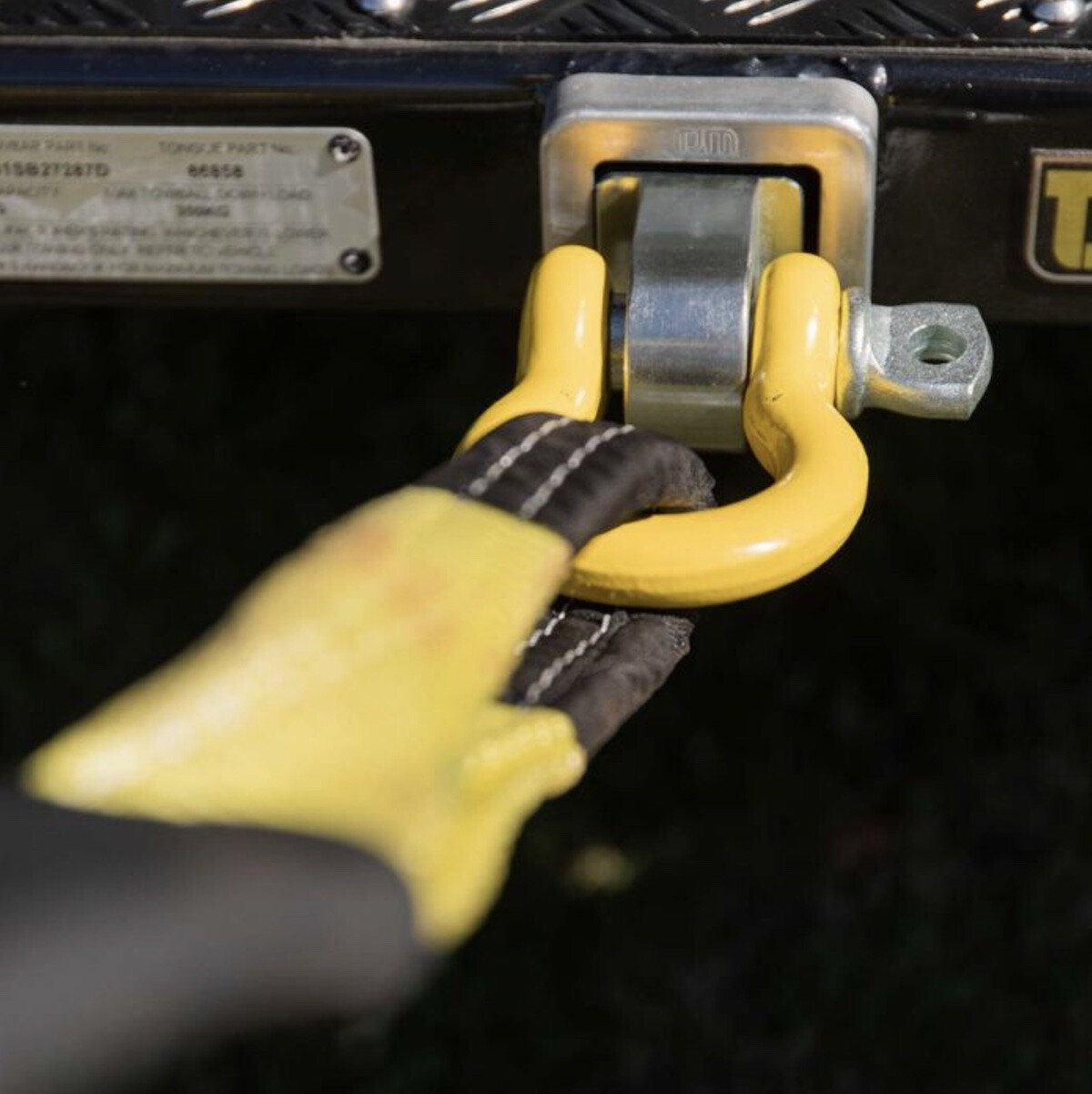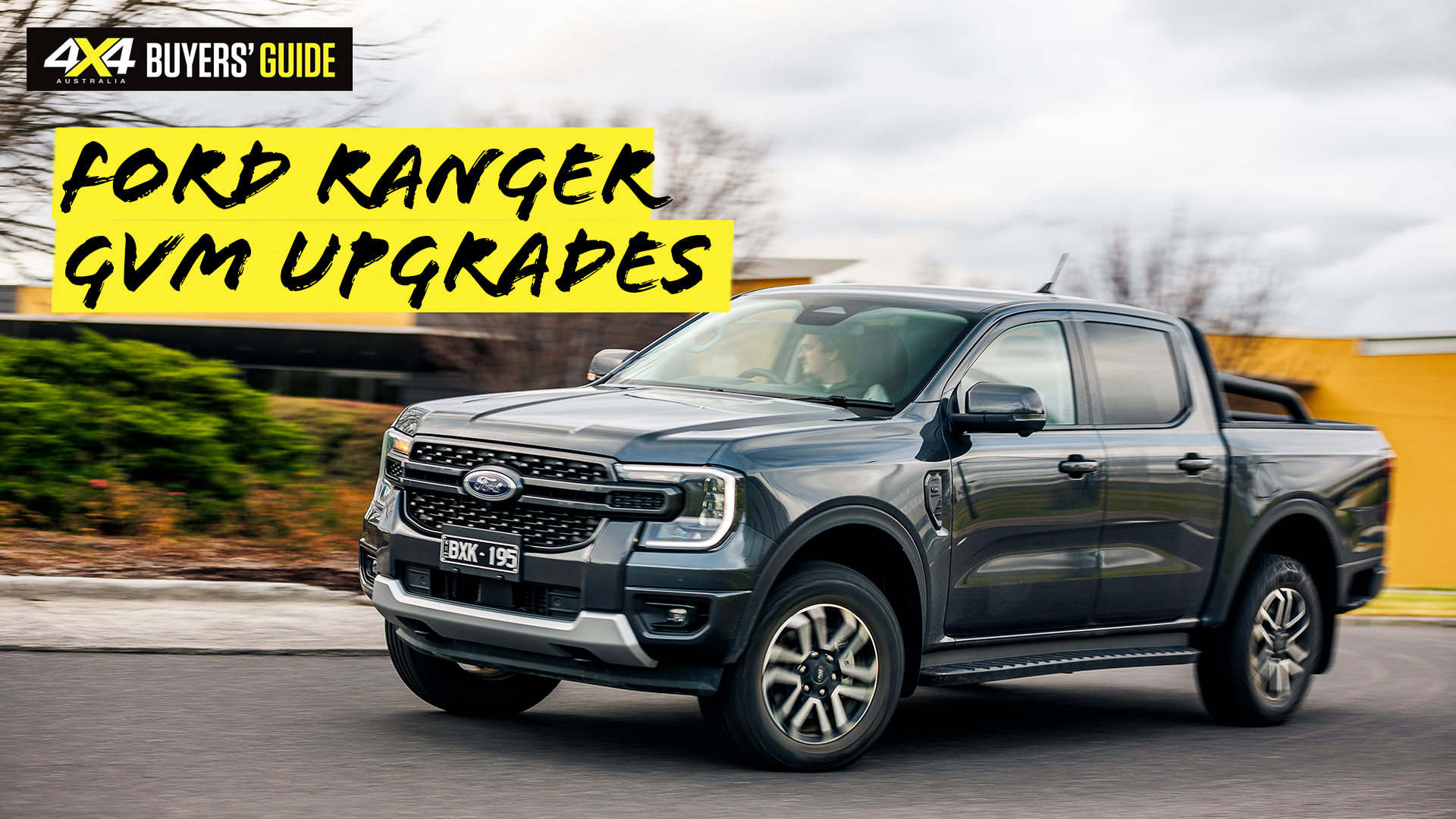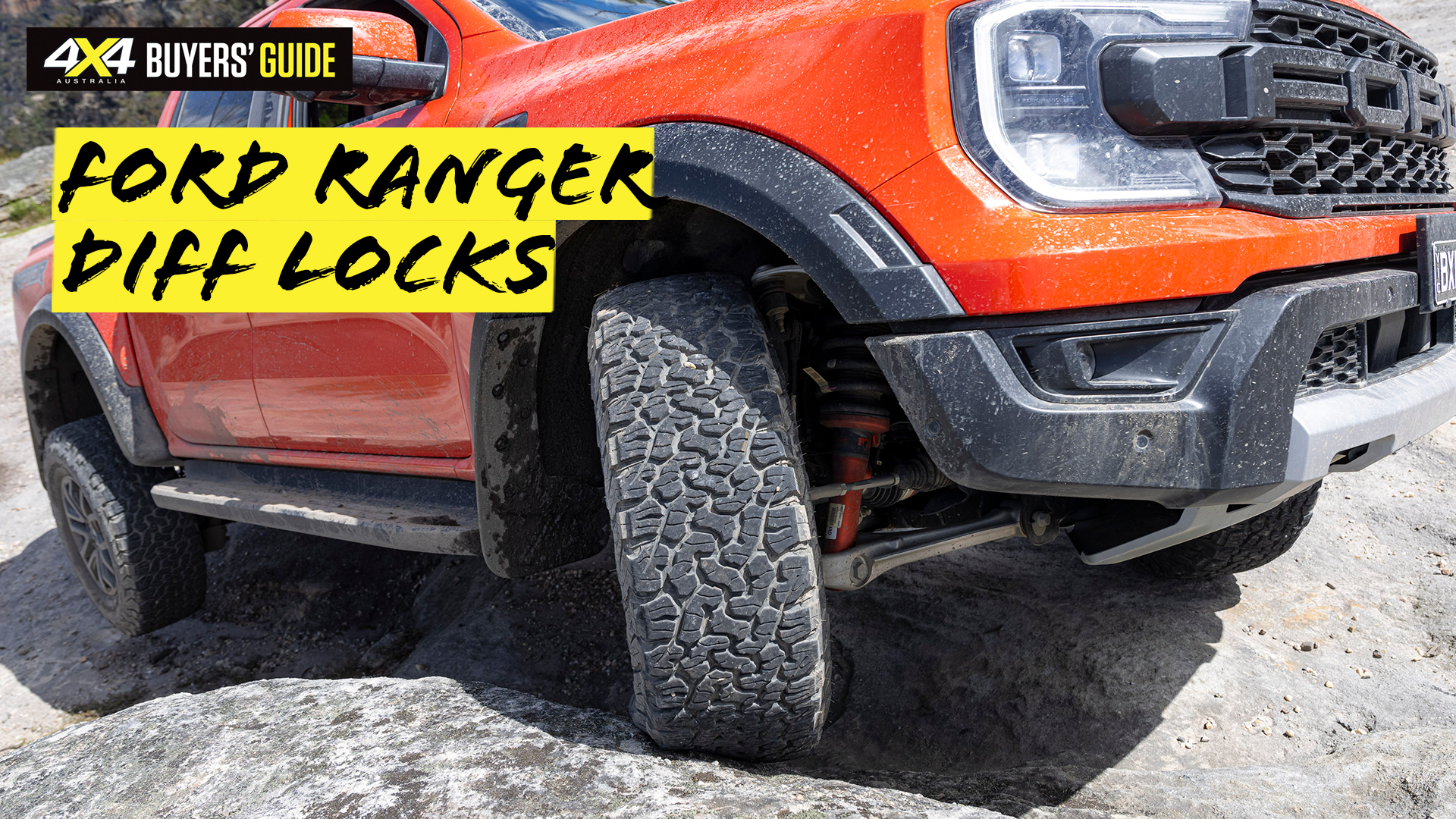Off-roading can be an exhilarating experience, but it comes with its fair share of challenges. Getting stuck is not uncommon, and without proper equipment it can quickly turn into a nightmare.
This is where rated recovery points come in handy. These recommended products are intended as a starting point, to give you an idea of what’s available. We’ve also included information on Ford Australia’s genuine accessories, in case you’d prefer to stick to OEM.
What it is: Attachments your vehicle can be dragged by or from.
Why you need it: Sooner or later you’ll get stuck or need to recover someone who is stuck. At that point significant forces will be exerted on your vehicle, and you need an attachment point strong enough for the job.
The Ranger NG includes two recovery points at the front, about which the Ford manual says: “Do not apply a load to the recovery hooks greater than the gross vehicle weight rating of your vehicle.” We advise considering using a bridle to split, but not halve the load on each point.
| Material | Max load | Suitable for soft shackles | |
|---|---|---|---|
| ARB front recovery points | Forged steel | 8000kg (at full steering lock) | Yes |
| MaxTrax Hitch 50 rear recovery point | Aluminium/Steel | Rated to 8800kg | Fits in 50mm square towbar receiver |
| Drifta Factor 55 Hitchlink 2.0 rear recovery point | Aluminium | 4300kg | No |
| TJM rear recovery hitch | Mild steel | 4750kg | No |
ARB front recovery points
ARB front recovery points are robust attachment points designed for off-road vehicles, facilitating safe recovery operations when stuck in challenging terrains like mud or sand.
Constructed from reinforced steel, they can withstand significant loads and are typically designed for specific vehicle models for easy installation. Each recovery point has a specified load rating, crucial for ensuring safety during recovery. Some include safety features to prevent accidental disconnection.
These recovery points enhance safety, protect the vehicle by evenly distributing loads, and are compatible with various recovery gear.
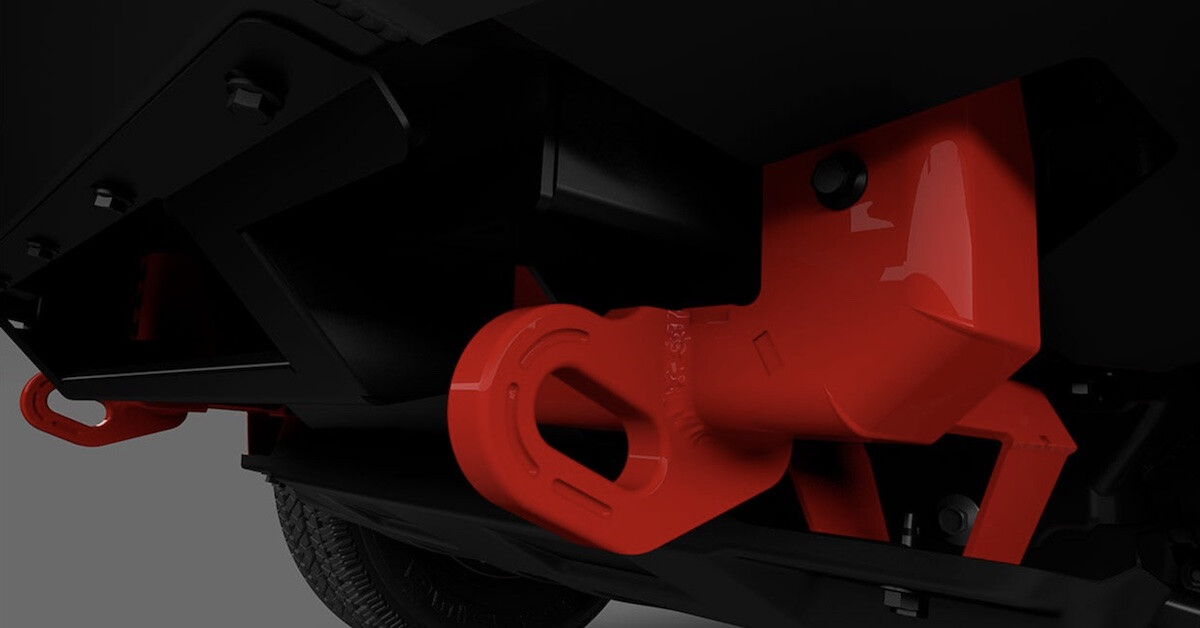
Specifications:
- Material: Forged steel
- Max load: 8000kg (at full steering lock)
- Suitable for soft shackles: Yes
Things we like
- Load rating is at full lock
- Each recovery point rated to 8000kg
- Compatible with soft shackles
Not so much…
- More expensive than generic brands
- Conflicting appearance
- Material: Forged steel
- Max load: 8000kg (at full steering lock)
- Suitable for soft shackles: Yes
MaxTrax Hitch 50 rear recovery point
The MaxTrax Hitch 50 rear recovery point is a handy tool for off-roaders, making it easy to hook up recovery gear like tow straps and winches.
Built tough from materials like aluminum or high-strength steel, it’s designed to take a beating and last. It fits standard two-inch hitch receivers, so you can easily use it on different vehicles. With multiple attachment points, the Hitch 50 gives you options for recovery setups. Plus, a secure locking mechanism keeps everything connected, which is super important during tricky recoveries.
It’s strong enough to handle tough situations, and you can switch it between different vehicles without a hassle. Installing it is a breeze; just slide it into your hitch receiver and secure it with a pin.
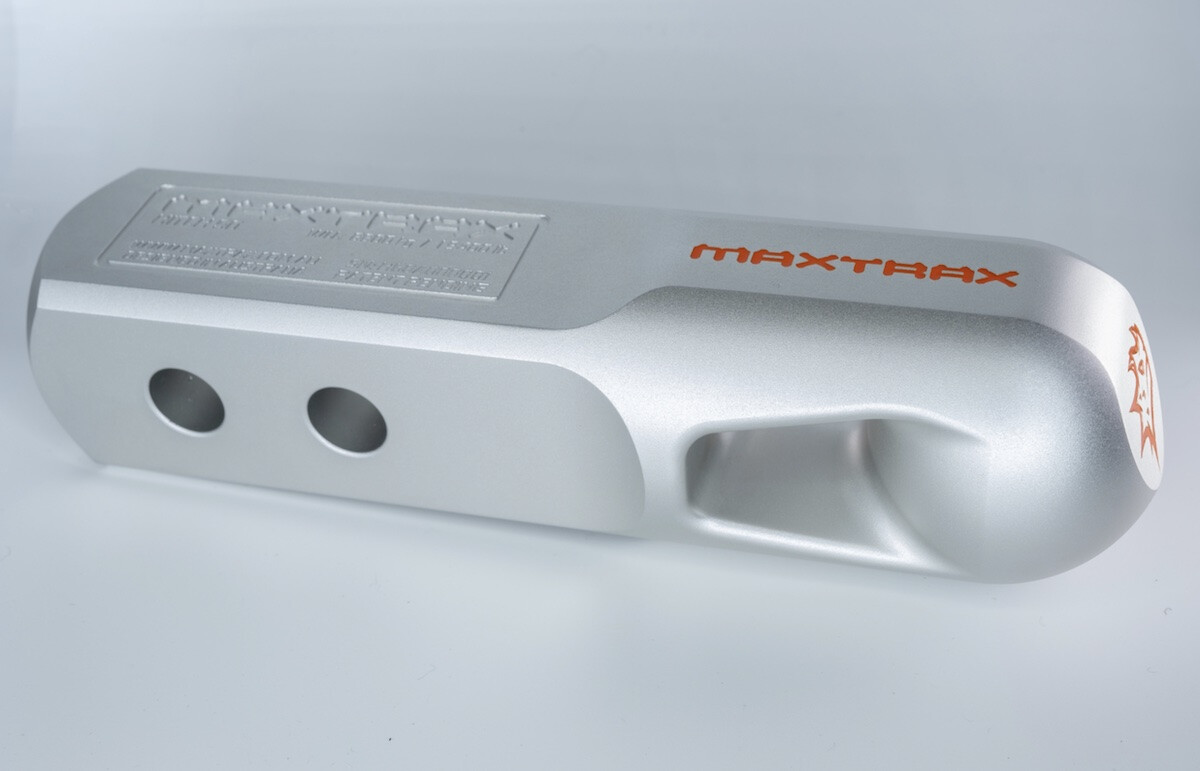
Specifications:
- Suitable for multidirectional pulls
- Rated to 8800kg
- Fits in 50mm square towbar receiver
Things we like
- Suitable for multidirectional pulls
- Rated to 8800kg
- Fits in 50mm square towbar receiver
Not so much…
- Not compatible with VW Amarok towbar
- Not universal fit
- Potential for wear
- Suitable for multidirectional pulls
- Rated to 8800kg
- Fits in 50mm square towbar receiver
Drifta Factor 55 Hitchlink 2.0 rear recovery point
The Drifta Factor 55 Hitchlink 2.0 rear recovery point is a durable accessory designed for off-road vehicles, providing a secure attachment for recovery gear like tow straps and winches.
Made from high-strength aluminum, it balances lightweight design with robust strength, making it easy to handle. A key feature is its positive locking pin, which keeps the recovery point securely in place, reducing the risk of accidental disconnection during recovery. It fits standard two-inch hitch receivers and is rated for loads up to 10,000 pounds, ensuring reliability in tough situations.
Installation is simple: just slide it into the hitch receiver and secure it with a pin. Regular inspections for wear are recommended.
Things we like
- Lightweight aluminium
- Value for money
- Fits in 50mm square towbar receiver
Not so much…
- Only suitable for inline pulls
- Not compatible with soft shackles
- Material: Aluminium
- Max load: 4300kg
- Suitable for soft shackles: No
TJM rear recovery hitch
Made from heavy-duty steel, the TJM rear recovery hitch is engineered to endure the demands of off-road recovery situations.
The TJM hitch can handle significant recovery efforts, making it suitable for larger vehicles and tough terrain. It is designed to fit standard two-inch hitch receivers, ensuring compatibility with a wide range of trucks, SUVs, and off-road vehicles.
One of the key features of the TJM rear recovery hitch is its multiple attachment points, which allow for versatile recovery setups depending on the situation. The hitch often incorporates a secure locking pin mechanism to prevent accidental disconnection during use, enhancing safety in recovery operations. It’s advisable to conduct regular inspections for any signs of wear, damage, or corrosion to maintain safety and effectiveness.
Things we like
- Can turn hitch horizontal or vertical
- Fits in 50mm square towbar receiver
- Rated 19mm bow shackle included
Not so much…
- Not compatible with soft shackles
- Corrosion risk
- Material: Mild steel
- Max load: 4750kg
- Suitable for soft shackles: No
Ford Australia/ARB licensing agreement
Ford Australia has a licensing agreement with ARB. Order ARB accessories when you order your next-gen Ranger, and they’ll be covered by Ford’s five-year warranty. So if you have a warranty issue, there are no grey areas about which company’s responsible.
If you order ARB accessories after purchase (through a Ford dealer), they’ll be covered by the remainder of the warranty period. If you’d like to know more about the Ford/ARB partnership, then go here.
How we review products
4X4 Australia has been reviewing four-wheel drive vehicles and aftermarket products for more than 40 years.
When looking for the best accessories for your make and model of 4WD, there are some things essential to making sure you have the best off-roading experience. When we compare products, here are some of the things we consider:
- Warranty
- Build quality
- Value for money
- Time and ease to set-up/install
- Weight
- Fit and finish
- How well it gets the job done
- What materials they’re made from
- Corrosion/UV resistance
- Coatings
- Compatibility with other accessories
- Compliance with ADRs and vehicle safety systems
- Country of manufacture
- Load ratings, to determine what’s the best product across each price point.
Back to top ⬆️
We recommend
-
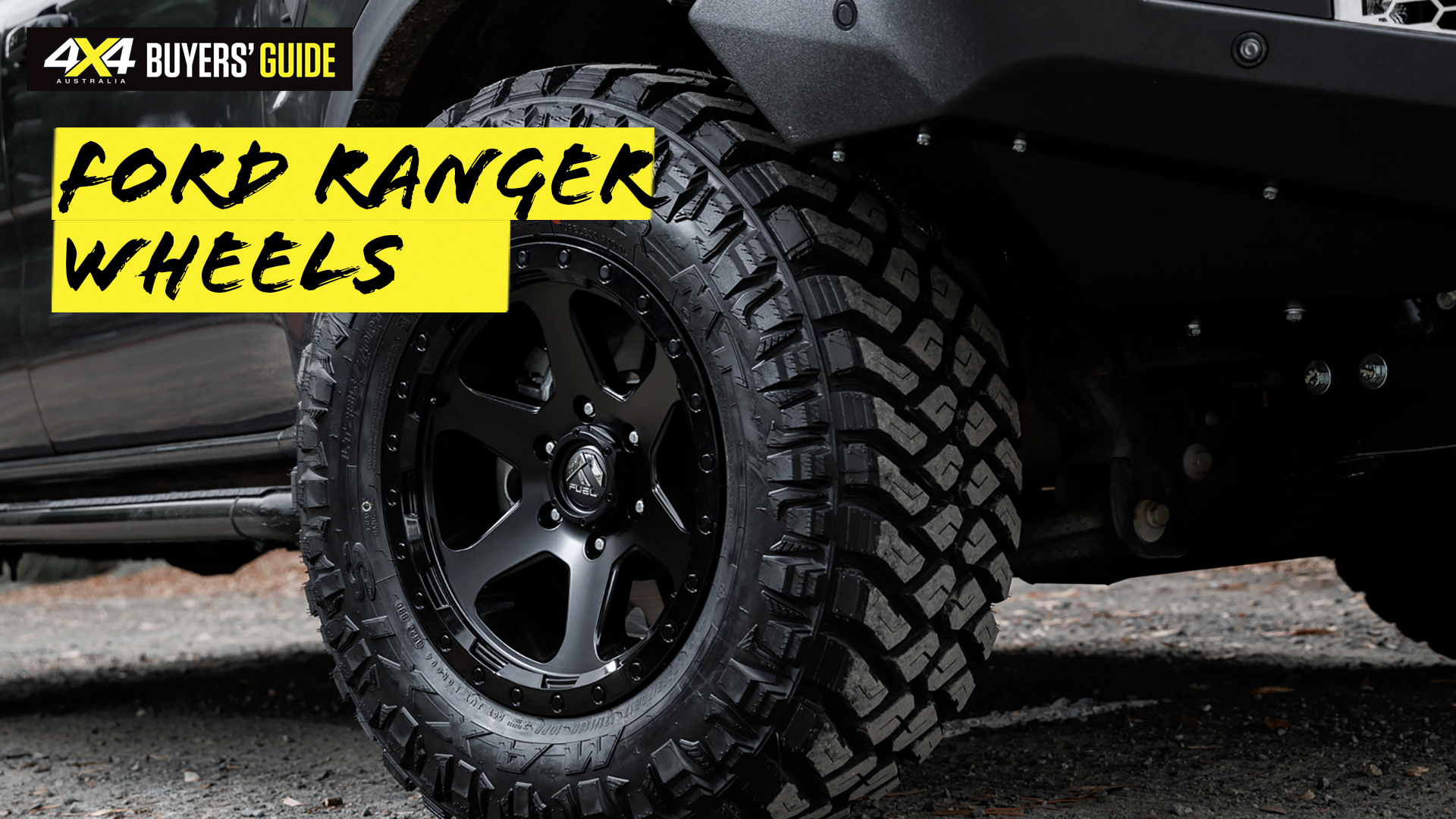 Ranger Accessories
Ranger AccessoriesFord Ranger wheels buyers' guide
One way to stand out on- and off-road is by adding a fresh set of wheels
-
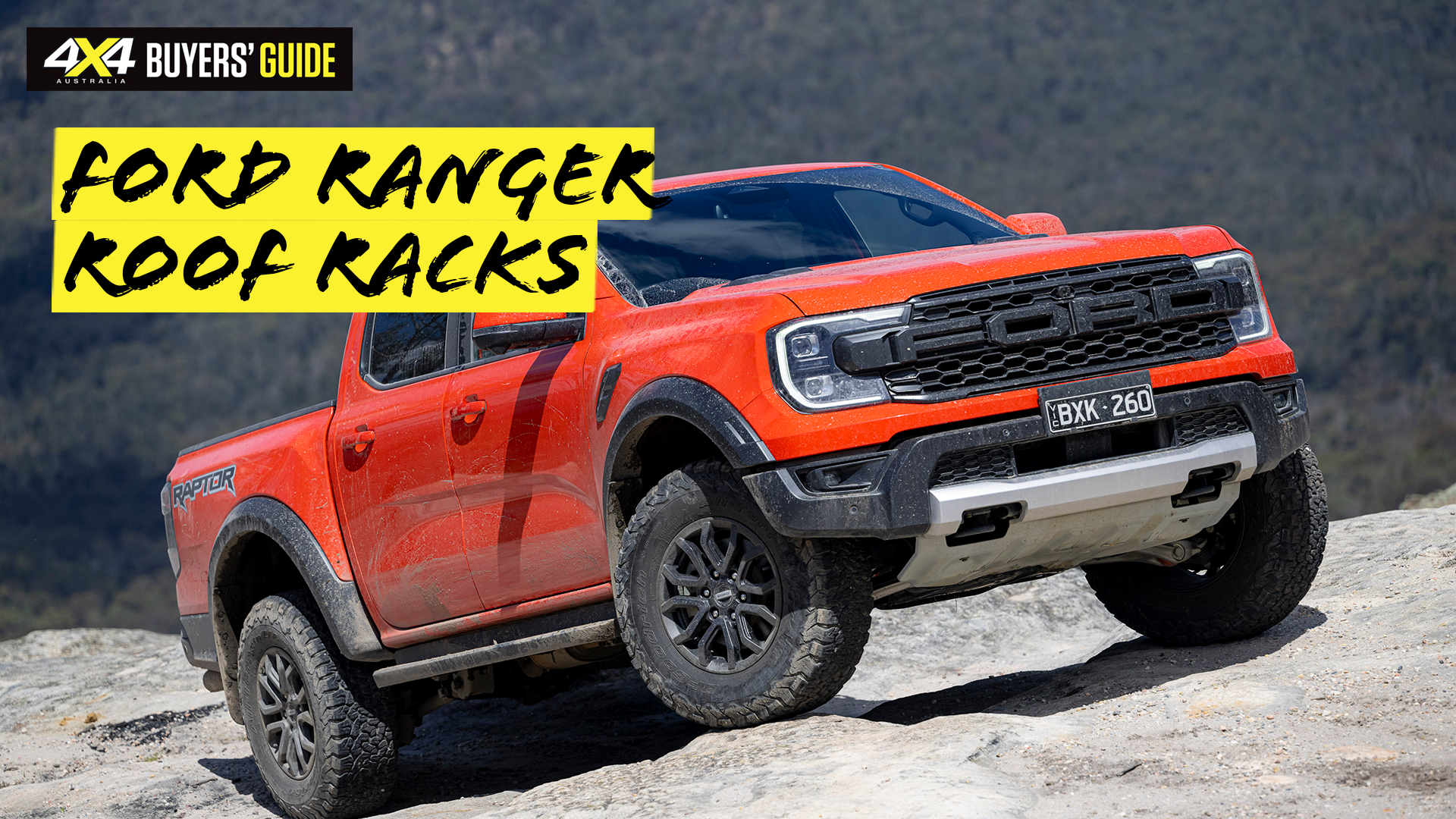 Ranger Accessories
Ranger AccessoriesFord Ranger roof racks
Installing a roof rack is an easy way to increase the Ranger's cargo capacity
-
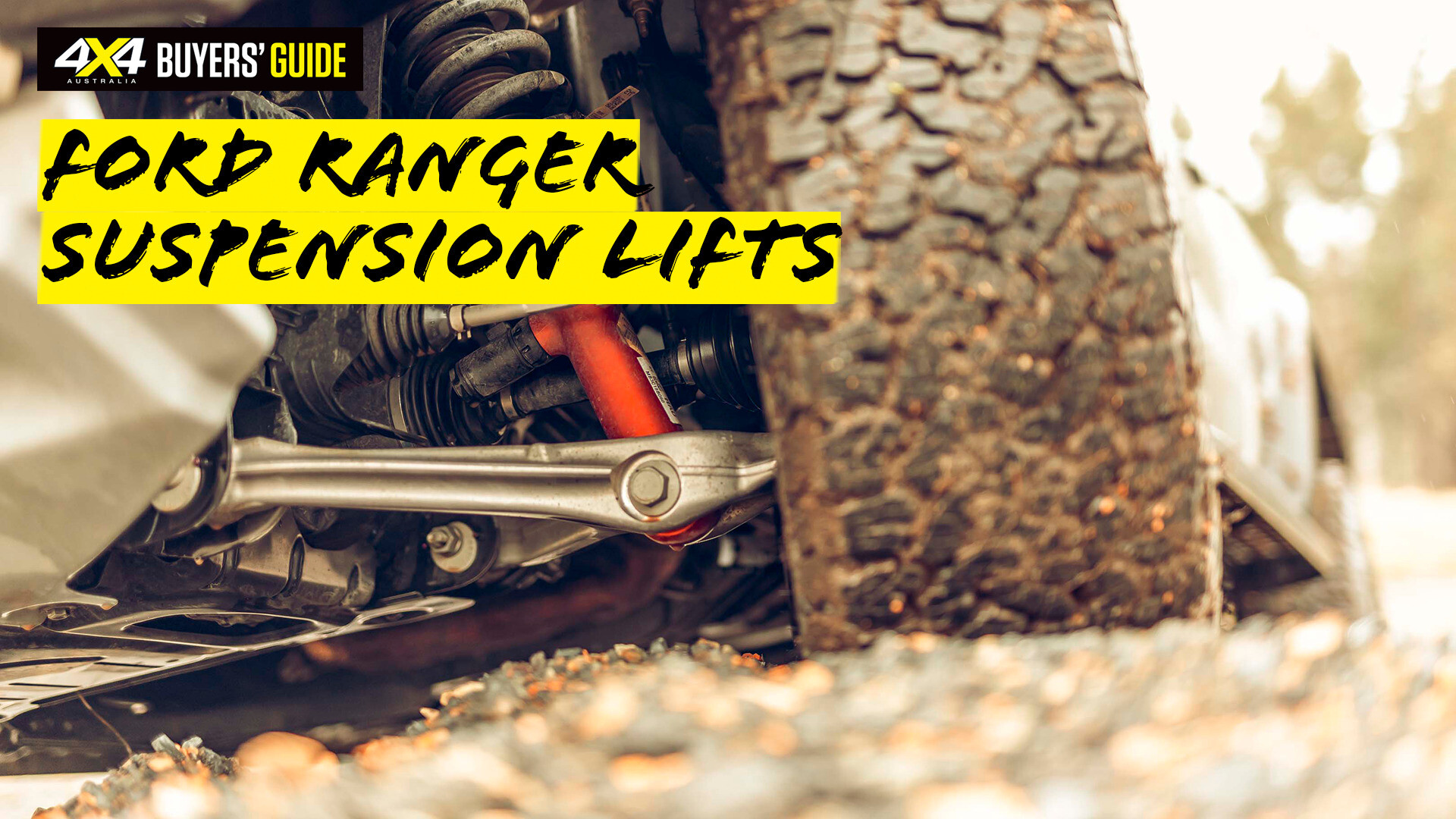 Ranger Accessories
Ranger AccessoriesFord Ranger suspension lift kits
A popular upgrade for enthusiasts looking to lift ground clearance and improve performance



